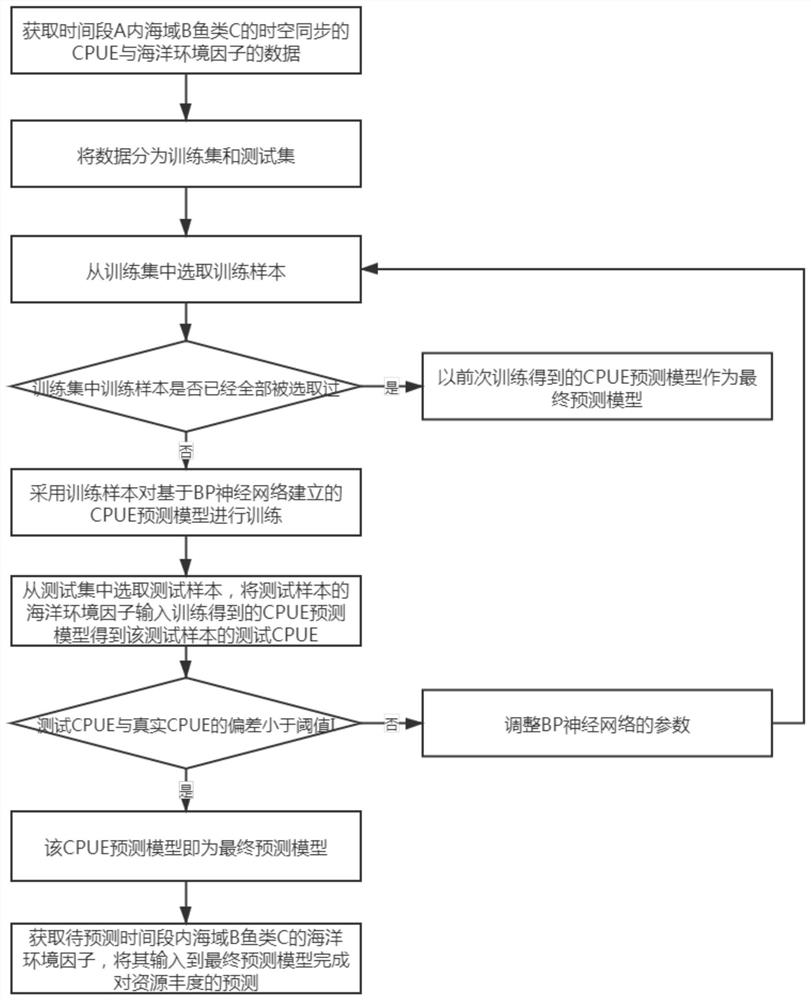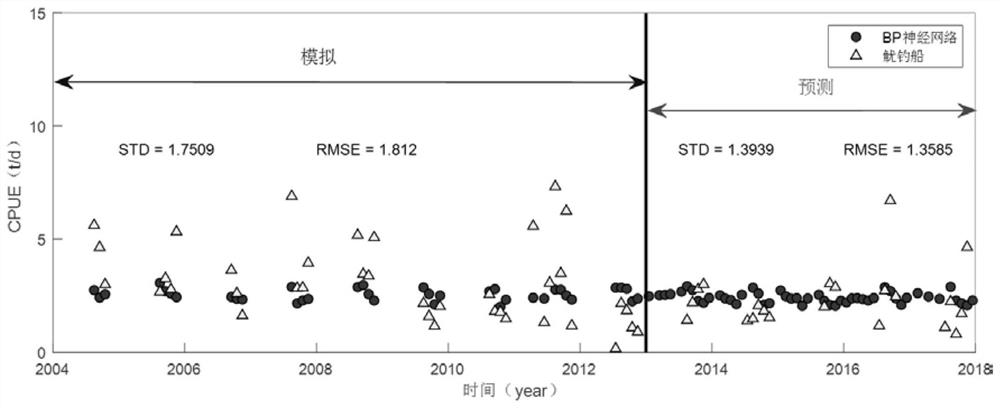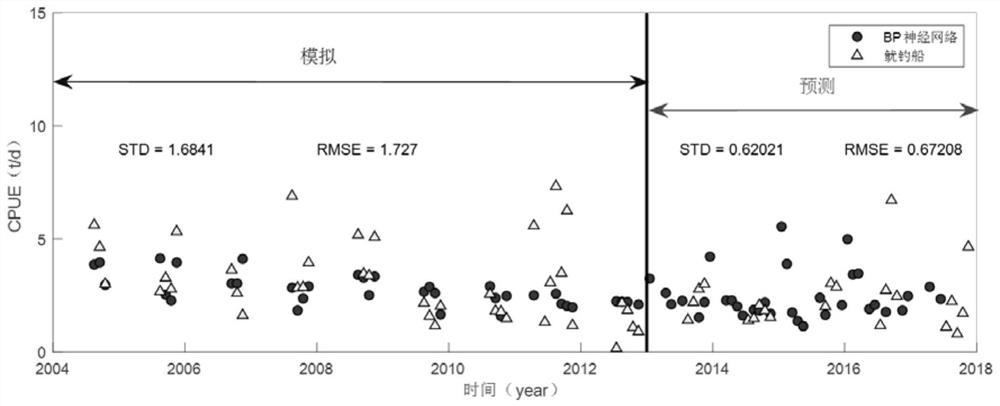Method for predicting ocean fishery resource abundance by integrating multi-source satellite remote sensing and application thereof
A technology for satellite remote sensing and fishery resources, applied in forecasting, data processing applications, neural learning methods, etc., can solve problems such as poor forecasting accuracy, and achieve the effects of improving accuracy, good convenience, and reducing difficulty
- Summary
- Abstract
- Description
- Claims
- Application Information
AI Technical Summary
Problems solved by technology
Method used
Image
Examples
Embodiment 1
[0049] A method of comprehensive multi-source satellite remote sensing to predict the abundance of pelagic fishery resources, such as figure 1 As shown, the steps are as follows:
[0050] (1) From May to December of 2004 to 2017, the coordinate range is 35° to 50°N, 150° to 175°E, and the production statistics data of soft fish in May to December of 2004 to 2017, and the coordinate range is 35° °~50°N, 150°~175°E The data of marine environmental factors obtained by multi-source satellite remote sensing are processed (in the time domain, the average processing is performed according to the specified time resolution (month), and in the space domain, according to 1 °×1° spatial resolution for resampling), to obtain the time-space synchronized CPUE and marine environment of softfish in the coordinate range of 35°-50°N and 150°-175°E from May to December 2004 to 2017 The marine environmental factors include seawater mass change, geostrophic current, sea surface temperature (SST), ...
Embodiment 2
[0091] an electronic device such as Figure 18 As shown, including one or more processors, one or more memories, one or more programs and data collection devices;
[0092] The data collection device is used to obtain the production statistics of fish C in sea area B in time period A, the data of marine environmental factors obtained by multi-source satellite remote sensing in sea area B in time period A, and the production statistics of fish C in sea area B in time period to be predicted. For the data of marine environmental factors, one or more programs are stored in the memory, and when one or more programs are executed by the processor, the electronic device executes the comprehensive multi-source satellite remote sensing prediction of the abundance of pelagic fishery resources as described in Embodiment 1. degree method.
PUM
 Login to View More
Login to View More Abstract
Description
Claims
Application Information
 Login to View More
Login to View More - R&D
- Intellectual Property
- Life Sciences
- Materials
- Tech Scout
- Unparalleled Data Quality
- Higher Quality Content
- 60% Fewer Hallucinations
Browse by: Latest US Patents, China's latest patents, Technical Efficacy Thesaurus, Application Domain, Technology Topic, Popular Technical Reports.
© 2025 PatSnap. All rights reserved.Legal|Privacy policy|Modern Slavery Act Transparency Statement|Sitemap|About US| Contact US: help@patsnap.com



